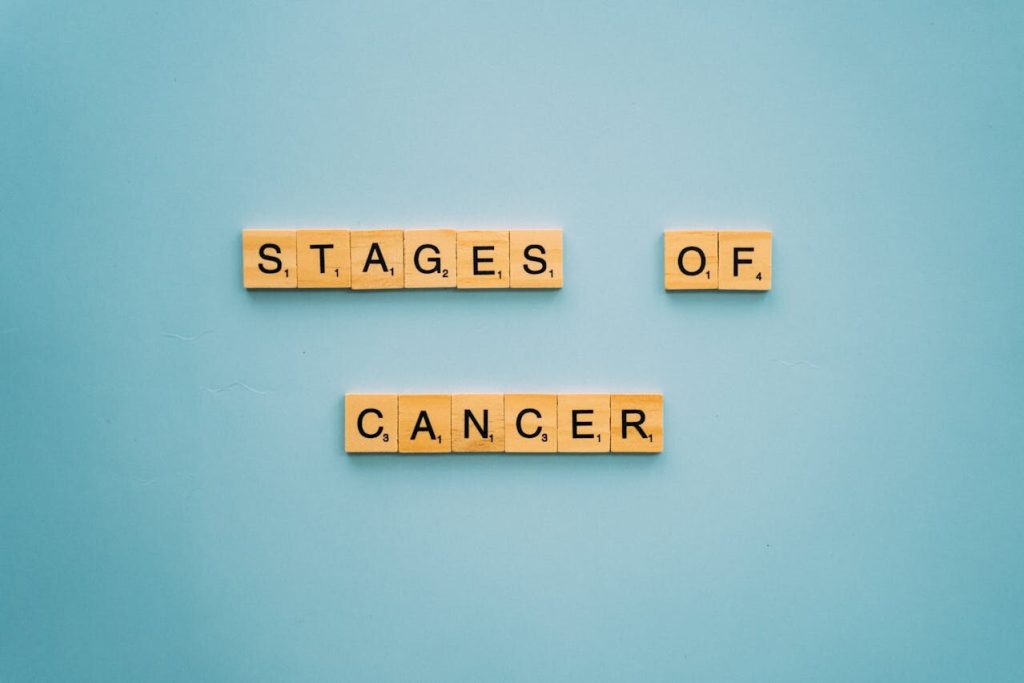Leukemia spots, also known as leukemia cutis, are skin manifestations of leukemia, a type of cancer that affects the blood and bone marrow. These spots can appear anywhere on the body and may be red, pink, or purple in color, flat or raised, and may have a scaly or rough texture.
In this article, we will explore the causes, symptoms, and available treatments for leukemia spots, as well as provide information on effective management and supportive resources for individuals dealing with this condition.
Key Takeaways
- Leukemia spots are skin manifestations of leukemia, a type of cancer that affects the blood and bone marrow.
- These spots can appear anywhere on the body and may have a scaly or rough texture.
- This article will provide an overview of the causes, symptoms, and available treatments for leukemia spots, as well as tips for effective management and supportive resources for individuals dealing with this condition.
What are Leukemia Spots?
Leukemia spots, also known as leukemia cutis, are a rare symptom of leukemia. These spots are caused by the infiltration of leukemia cells into the skin, resulting in various skin lesions and rashes.
Leukemia spots can appear anywhere on the body and may differ in appearance and size. The spots can range from red or purple bumps to flat, scaly patches. Some may resemble bruises or petechiae (tiny red or purple spots on the skin), while others may be nodules or plaques.
Leukemia spots on the skin are often accompanied by other symptoms, such as fatigue, fever, and weight loss. The severity and frequency of these symptoms can vary depending on the type and progression of the leukemia.
Early detection of leukemia spots is critical, as it can aid in the early diagnosis and prompt treatment of leukemia. If you notice any unusual skin changes or symptoms, consult your healthcare provider immediately.
Causes of Leukemia Spots
There are several potential causes of leukemia spots, including genetic factors, exposure to certain chemicals or radiation, and previous cancer treatments. In some cases, leukemia spots can occur as a result of a genetic mutation that affects the body’s ability to produce healthy blood cells. Exposure to certain chemicals or radiation, such as benzene or ionizing radiation, can also increase the risk of developing leukemia and subsequent spots. Additionally, individuals who have undergone cancer treatments, such as chemotherapy or radiation therapy, may be at an increased risk for developing leukemia spots.
The development of leukemia spots may also be associated with certain medical conditions, such as myelodysplastic syndrome (MDS) or myeloproliferative disorders. MDS is a group of conditions in which the body does not produce enough healthy blood cells, while myeloproliferative disorders involve the overproduction of certain blood cells.
Diagnosing Leukemia Spots
Diagnosing leukemia spots typically involves a combination of physical examinations, blood tests, and biopsies. If a patient presents with symptoms such as unexplained bruising, fatigue, or persistent infections, a healthcare provider will conduct a thorough physical examination to check for any abnormalities or signs of leukemia.
Blood tests may also be ordered to check for abnormal cell counts or genetic abnormalities, which can provide further insight into the suspected leukemia diagnosis. In some cases, a bone marrow biopsy may be necessary to confirm the diagnosis and determine the specific type of leukemia a patient has.
Understanding Leukemia Spots on the Skin
Leukemia spots on the skin, also known as leukemia cutis, are a common symptom of certain types of leukemia. These spots typically appear as red or purple patches on the skin and often have a raised or bumpy texture. In some cases, the spots may resemble a rash or hives.
Leukemia spots on the skin can occur in various areas of the body, including the arms, legs, face, and torso. The appearance and location of the spots can depend on the type of leukemia present and the stage of the disease.
| Characteristic | Description |
|---|---|
| Appearance | Red or purple patches on the skin, often with a raised or bumpy texture |
| Location | Can occur on any area of the body, including the face, legs, arms, and torso |
| Texture | May be smooth or rough, with a scaly or itchy texture in some cases |
If you suspect that you may have leukemia spots on your skin, it is important to seek medical evaluation and testing as soon as possible. Your healthcare provider can perform a physical exam, take a biopsy of the affected skin, and conduct other tests to diagnose leukemia and determine the best course of treatment.
Leukemia Spots Images
Here are some images to give you an idea of what leukemia spots can look like:
Leukemia Spots on the Face
Leukemia spots can occur on any part of the body, including the face. While this can be concerning, it is important to note that leukemia spots on the face are generally not a cause for alarm and are often harmless.
These spots typically appear as small, red or purple dots and may be accompanied by other symptoms such as fatigue or frequent infections. If you notice any unusual spots on your face, it is important to consult with your healthcare provider to rule out any underlying medical conditions.
While treatment for leukemia spots on the face is often not necessary, in some cases, laser therapy may be used to reduce their appearance. Your healthcare provider can help determine the best course of action for your specific situation.
Leukemia Spots on the Legs
Leukemia spots can appear anywhere on the body, including the legs. These spots on the legs can be small or large, and they may have a range of colors, from red to brown to purple. In some cases, they may appear as bruises that do not heal or go away.
If you have leukemia spots on your legs, you may also experience other symptoms, such as fatigue, weakness, and shortness of breath. It is crucial to seek medical attention if you notice any unusual changes in your skin or experience any of these symptoms.
| Treatment Options | Possible Side Effects |
|---|---|
| Chemotherapy | Nausea, fatigue, hair loss |
| Radiation therapy | Skin irritation, fatigue |
| Targeted therapy | Diarrhea, fatigue, skin rash |
The treatment for leukemia spots on the legs depends on the individual’s specific case and the extent of the disease. Common treatment options include chemotherapy, radiation therapy, targeted therapy, and stem cell transplantation. Each treatment comes with potential side effects that should be discussed with a healthcare provider.
Side Effects of Chemotherapy
Chemotherapy is a common treatment for leukemia spots on the legs. It works by killing cancer cells or preventing them from dividing and growing. While chemotherapy can be effective, it also comes with side effects, such as nausea, fatigue, and hair loss.
It is essential to discuss the potential side effects of chemotherapy with a healthcare provider before starting treatment. A healthcare provider can also provide guidance on how to manage any side effects that occur during treatment.
Treatment Options for Leukemia Spots
Once leukemia spots have been diagnosed, treatment options can vary depending on the severity and progression of the disease. Treatment is typically administered by a team of specialists, including hematologists and oncologists, who work together to devise a personalized treatment plan based on the patient’s age, overall health, and other factors.
The primary treatment for leukemia spots is chemotherapy, a drug therapy that targets and destroys cancer cells. In some cases, radiation therapy may also be used to target leukemia spots that are more localized. Targeted therapy, which uses drugs designed to attack specific proteins or pathways in cancer cells, may also be an option for some patients.
In cases where chemotherapy and radiation therapy are not effective, stem cell transplantation may be considered. This treatment involves transplanting healthy stem cells into the patient’s body to replace damaged or cancerous cells.
While these treatments can be effective in controlling and even eliminating leukemia spots, they can also have significant side effects, such as hair loss, nausea, and fatigue. Patients may also need to take additional medications to manage symptoms and side effects.
Alternative Treatment Options
In addition to traditional medical treatments, some patients may choose to explore alternative and complementary therapies to manage their symptoms and improve their overall well-being. These therapies can include acupuncture, massage therapy, and nutritional counseling.
It is important to note that while these therapies may be helpful for some patients, they should not be used as a replacement for traditional medical care. Patients should always consult with their medical team before starting any new treatments, as some therapies may interact with medications or have other potential risks.
Holistic Approach to Leukemia Spot Treatment at the Cancer Center for Healing
The Cancer Center for Healing, led by Dr. Leigh Erin Connealy, offers a comprehensive and holistic approach to treating leukemia spots. Dr. Connealy believes that healing requires addressing the whole person, including the physical, emotional, and spiritual aspects of the individual.
At the Cancer Center for Healing, patients receive personalized treatment plans that incorporate a range of holistic treatment modalities. These may include targeted nutrition plans; individualized supplement regimens; IV nutrient therapies; infrared saunas; lymphatic drainage therapy; and more. By supporting the body’s natural healing processes, these treatments can help boost the immune system and promote overall health and wellness, while also targeting the cancer cells directly.
The Comprehensive Cancer Care at the Cancer Center for Healing
The Cancer Center for Healing in Irvine, CA offers comprehensive cancer care for individuals with leukemia spots and other types of cancer. Under the guidance of Dr. Leigh Erin Connealy, a renowned integrative medical oncologist, the center provides personalized treatment plans that incorporate both conventional and holistic approaches.
The Cancer Center for Healing takes a whole-person approach to cancer care, addressing not only the physical symptoms but also the emotional and spiritual aspects of the disease. The center offers a range of supportive therapies, including nutrition counseling, acupuncture, massage, and meditation, to help patients manage the side effects of treatment and improve their quality of life.
| Comprehensive Cancer Care Services: | Supportive Therapies: |
|---|---|
| – Chemotherapy | – Nutrition Counseling |
| – Radiation Therapy | – Acupuncture |
| – Targeted Therapy | – Massage |
| – Stem Cell Transplantation | – Meditation |
At the Cancer Center for Healing, patients receive expert medical care in a warm and welcoming environment. The staff is dedicated to providing compassionate support throughout the entire cancer journey, from diagnosis to survivorship.
Personalized Treatment Plans
Dr. Connealy and her team at the Cancer Center for Healing develop personalized treatment plans for each patient, taking into account their unique medical history, current condition, and treatment preferences. Treatment plans may include a combination of conventional therapies, such as chemotherapy and radiation, as well as holistic modalities, such as nutritional supplements and mind-body therapies.
Team Approach to Cancer Care
The Cancer Center for Healing follows a team approach to cancer care, bringing together a range of medical specialists and supportive therapists to address every aspect of the disease. The team includes medical oncologists, naturopathic doctors, nutritionists, acupuncturists, massage therapists, and spiritual counselors, among others.
By working together, the team is able to provide comprehensive care that meets the unique needs of each patient and improves their chances of a successful outcome.
Schedule a Consultation at the Cancer Center for Healing
If you or a loved one has been diagnosed with leukemia spots, it is important to seek prompt and experienced medical care. The Cancer Center for Healing, under the care of esteemed integrative oncologist Dr. Leigh Erin Connealy, offers a holistic approach to treatment that focuses on addressing the root causes of cancer and nurturing the whole person.
To schedule a consultation with Dr. Connealy and discuss personalized treatment options for leukemia spots, please call the Cancer Center for Healing at (949) 680-1880.
Effective Management of Leukemia Spots
While treatment options for leukemia spots are available, there are also steps individuals can take to effectively manage their condition and improve overall health. Here are some tips:
- Maintain a healthy lifestyle: Eating a balanced diet, exercising regularly, and getting enough rest can all help boost the immune system and improve overall well-being. It is also important to avoid smoking or exposure to secondhand smoke and limit alcohol consumption.
- Practice good skincare: Individuals with leukemia spots on their skin should protect themselves from the sun by wearing protective clothing and using a broad-spectrum sunscreen with at least SPF 30. Keeping skin moisturized can also help alleviate dryness and itching.
- Seek regular medical follow-ups: It is important for individuals with leukemia spots to have regular check-ups with their healthcare provider to monitor their condition, assess treatment progress, and identify any potential complications early on.
- Manage stress: Stress can weaken the immune system and exacerbate symptoms, so individuals should practice stress-reduction techniques, such as deep breathing, meditation, or yoga, if possible.
By implementing these strategies and following their healthcare provider’s advice, individuals with leukemia spots can better manage their condition and improve their quality of life.
Promising Research and Future Developments
Although leukemia spots can be a challenging diagnosis, ongoing research offers promising developments for the future. Researchers are exploring new diagnostic tools that could provide more accurate and efficient detection of leukemia spots, allowing for earlier treatment and better outcomes. Additionally, advances in targeted therapy and immunotherapy may offer more personalized treatment options with fewer side effects.
One area of research generating excitement is the use of CAR T-cell therapy, which involves modifying a patient’s own immune cells to specifically target and destroy cancer cells. While still in the experimental stage, early results show promising outcomes for individuals with certain types of leukemia, including leukemia spots on the skin.
Furthermore, ongoing studies are examining the role of diet and lifestyle factors in leukemia development and progression. By identifying specific dietary and lifestyle interventions, researchers hope to improve outcomes and reduce the risk of recurrence for individuals with leukemia spots.
Support and Resources for Leukemia Spot Patients
Dealing with leukemia spots can be a challenging and stressful experience, but it’s important to remember that you are not alone. There are numerous support groups, online resources, and organizations available to offer guidance and assistance to individuals in similar situations.
One such organization is the Leukemia and Lymphoma Society (LLS), which provides helpful information and support to patients and their families. They also offer financial assistance for treatment-related expenses and can connect you with volunteers who can provide emotional support throughout your journey.
The Cancer Support Community is another valuable resource, offering free support groups, educational workshops, and counseling services to individuals impacted by cancer. This organization can help connect you with other cancer patients, survivors, and caregivers who understand what you’re going through.
If you’re looking for online resources, the American Cancer Society offers a wealth of information on leukemia, including the latest research, treatment options, and support services. They also offer an online community where you can connect with others affected by leukemia and share your experiences.
Additionally, many cancer centers have social workers on staff who can help connect you with local resources and support groups. Don’t hesitate to reach out to your treatment team for more information.
Remember, it’s important to take care of both your physical and emotional health when dealing with leukemia spots. Finding the right support and resources can make a significant difference in your overall well-being and help you feel more empowered in your journey.
Conclusion
Leukemia spots can be a sign of serious health issues and should not be ignored. Early detection, prompt treatment, and comprehensive care are essential for effectively managing this condition. By understanding the causes, symptoms, and available treatments for leukemia spots, individuals can make informed decisions about their health and work with healthcare professionals to develop personalized treatment plans.
In addition to medical interventions, adopting a healthy lifestyle and seeking regular medical follow-ups can help individuals effectively manage leukemia spots. Ongoing research and future developments in the diagnosis and treatment of leukemia spots provide hope for improved outcomes, and individuals dealing with this condition can benefit from available support groups, online resources, and organizations.
Remember to Schedule Regular Medical Follow-ups
While leukemia spots may not always indicate cancer, it is important to stay vigilant and seek prompt medical attention if you notice any suspicious spots on your skin. By working with a healthcare professional and following a comprehensive treatment plan, individuals with leukemia spots can effectively manage this condition and enjoy a better quality of life.
FAQ
Q: What are leukemia spots?
A: Leukemia spots, also known as leukemia cutis, are skin manifestations that occur in individuals with leukemia. These spots can vary in appearance and may present as red or purple patches, nodules, or papules on the skin.
Q: What causes leukemia spots?
A: The development of leukemia spots can be attributed to various factors. Some possible causes include genetic factors, exposure to certain chemicals or radiation, and previous cancer treatments such as chemotherapy or radiation therapy.
Q: How are leukemia spots diagnosed?
A: Leukemia spots are typically diagnosed through a combination of physical examinations, blood tests, and skin biopsies. These diagnostic methods help healthcare professionals confirm the presence of leukemia and determine the appropriate treatment approach.
Q: What are leukemia spots on the skin?
A: Leukemia spots that appear on the skin can present as red or purple patches, nodules, or papules. They may be accompanied by other symptoms such as itching, pain, or ulceration. Images showcasing the appearance of leukemia spots on the skin can be found for reference.
Q: Do leukemia spots occur on the face?
A: Yes, leukemia spots can occur on the face. When leukemia spots develop on the face, they may affect an individual’s appearance and cause concerns. It is important to seek medical advice for proper evaluation and treatment.
Q: Can leukemia spots occur on the legs?
A: Yes, leukemia spots can occur on the legs. These spots may present as red or purple patches, nodules, or papules. It is essential to consult a healthcare professional to determine the cause and appropriate treatment options.
Q: What are the treatment options for leukemia spots?
A: Treatment options for leukemia spots may include chemotherapy, radiation therapy, targeted therapy, and stem cell transplantation. The choice of treatment depends on various factors such as the type and stage of leukemia, overall health, and individualized treatment plans.
Q: What is the holistic approach to leukemia spot treatment at the Cancer Center for Healing?
A: At the Cancer Center for Healing, located in Irvine, CA, Dr. Leigh Erin Connealy provides a holistic approach to leukemia spot treatment. This approach encompasses a range of treatment modalities that focus on the physical, emotional, and spiritual well-being of patients.
Q: What comprehensive cancer care is available at the Cancer Center for Healing?
A: The Cancer Center for Healing offers comprehensive cancer care, including personalized treatment plans and supportive therapies. This approach aims to address not only the medical aspects of leukemia spots but also the overall quality of life and well-being of patients.
Q: How can I schedule a consultation at the Cancer Center for Healing?
A: To schedule a consultation at the Cancer Center for Healing in Irvine, CA, please contact us at [phone number]. Our dedicated team is ready to assist you and provide the necessary information for your appointment.
Q: How can leukemia spots be effectively managed?
A: Effective management of leukemia spots involves practicing good skincare, maintaining a healthy lifestyle, and seeking regular medical follow-ups. It is crucial to follow the guidance of healthcare professionals and adopt strategies that promote overall well-being.
Q: Are there any promising research and future developments regarding leukemia spots?
A: Ongoing research continues to explore potential advancements in the diagnosis and treatment of leukemia spots. These developments offer hope for improved outcomes and more effective management strategies.
Q: What support and resources are available for individuals with leukemia spots?
A: There are various support groups, online resources, and organizations that provide assistance and guidance to individuals dealing with leukemia spots. These resources can offer emotional support, education, and practical information to help individuals navigate their journey.







